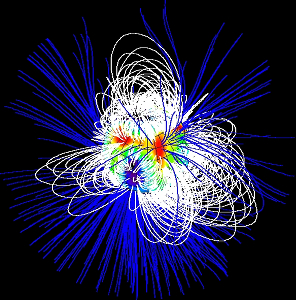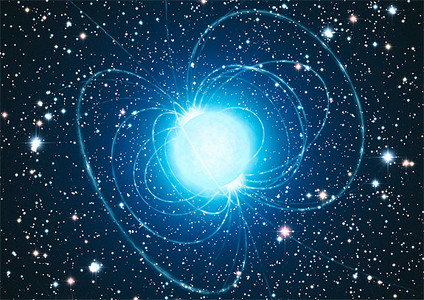|
|
|
RationaleAll phases of stellar evolution are influenced by the presence of magnetic fields in the interior and close environment of stars. Magnetic fields play a central role in the spindown of young stars through magnetized outflows, stardisc interaction or magnetically-driven winds. They also impact the vertical settling of chemical species, leading to abnormal surface abundances observed in stars more massive than the Sun. The advanced phases of stellar evolution are also involving magnetic fields, through their contribution to the mass-loss of cool giants and supergiants. Finally, extreme magnetic fields are observed in a small fraction of compact stellar remnants, powering X-rays and gamma rays emission. If most of these points, among many others, have been identified decades ago, the ability to measure stellar magnetic fields and incorporate them in stellar models is relatively new. In this young and still growing research domain, the last few years have seen the dawn of a new era, with the advent of powerful tools strengthening both observational and modelling approaches to this field, rapidly changing our view of stellar magnetism throughout stellar evolution.
With an increasing number of present or future ground-based instruments in the visible and near infrared domains, stellar spectropolarimetry is now delivering direct magnetic field measurements throughout most of the Hertzprung-Russell diagram. Combined with tomographic modelling, spectropolarimetric data sets give access to the surface distribution of the magnetic vector with increasing spatial and temporal resolution. Many indirect tracers of magnetic activity are also available from X-rays to sub-millimetric and radio wavelengths, providing us with observational clues on the effect of magnetic fields at various distances from the stellar surface (chromosphere, corona, accretion flows, winds, jets). Statistical studies based on unprecedently huge samples are also obtained from space-borne observatories like KEPLER, offering a completely new view of stellar activity. They will soon be complemented by systematic activity measurements provided by the GAIA spacecraft. This wealth of observational material is progressively getting closer to the richness of solar observations, for which continuous monitoring is now available at extremely high spatial resolution and throughout most of the electromagnetic spectrum (e.g. HINODE, SDO). These tight observational constraints constitute a necessary guidance to numerical simulations of stellar magnetism, which now use the power of massivelyparallel supercomputers, enabling the investigation of stellar dynamos through global 3-D simulations of convective layers, as well as the evolution of magnetic fields in radiative zones. |




